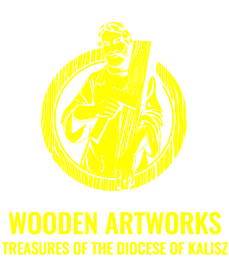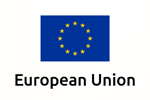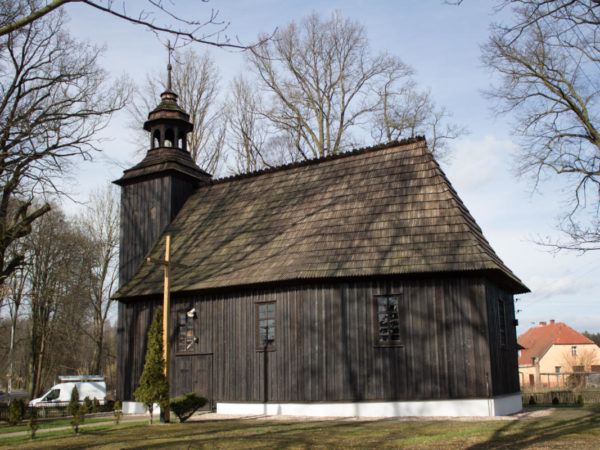Wooden monuments
The erection board
The board was created probably for an important event for the local community: a ceremonial establishment of a parish or an erection of a new church. It is special for a few reasons: rarely ever churches made of wood have an erection board which would survive till this day, it is made of wood and probably dates to 1492 (!). Although the date is hard to read, the board is unmistakebly an unsusual relict of the past. It is thought that the board was originally put in a church that previously existed in this spot.
Now the board hangs above the entrance to the vestry.
- A sign carved in the board: In nomine Patri Et Filii Et Spiritus Sancti Anno Domini… (In the name of the Father and Son and the Holy Spirit…), now blurred in many places and hardly legible.
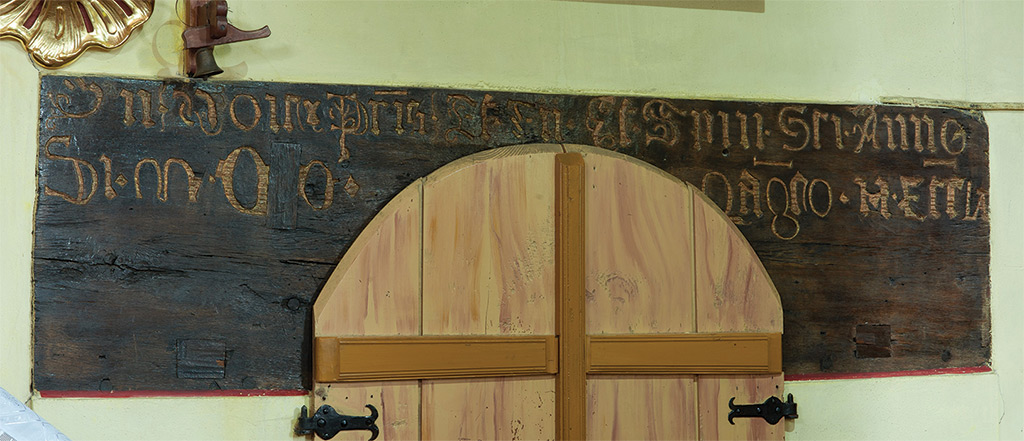

The erection board from the older church has been composed into the architecture of the new one. It was a symbolic act which emphasized the permanence of the church’s existance.
Tender Madonna
The painting which presents Madonna with the Child was painted by Ferdinand Winter, a 19th century German artist. After studying in Germany and Belgium he moved to Wroclaw where he took on religious painting. His works were inspired by the Nazarene painters. It was a group of artists who reacted against the academic way of painting and who worked in the style of Italian Renaissance (quattrocento). They maily painted religious scenes. The members of the Nazarene group led an ascetic life. They stood out thanks to their clothes and hairstyle because they wore loose-fitting cloaks and had long hair.


- Madonna who is holding the Child is an example of an image full of gentleness, tenderness and simplicity. In her beautiful face one can notice a resemblance to female figures painted by such Renaissance artists like the famous Sandro Botticelli.
Gate to the Kingdom of Heaven
In the baroque main altar decorated with architectural ornaments, two full-bodied figures of angels catch the eye. They are standing on the sides of a painting of Holy Trinity, acting as heralds who mediate between the faithful and God. The use of paint makes the sculptures come alive. Their three-dimensional character is intensified by the impression which suggests that they have just “left” the frames of the painting.

The painting itself closed on top by an arch or arcade form is also an illusion of its own kind: it becomes a gate to the Kingdom of Heaven. The place where among clouds, in full glory, sits one God in three Divine Persons: Father, Son and Holy Spirit…
Death in the Vltava river
Above the entrance to the vestry a painting of St. John of Nepomuk can be seen. He lived in the 14th century and was a canon in the cathedral in Hradčany in Prague. He was also a personal confessor of queen Sophia of Bavaria. The king wanted to learn the sins of his spouse so he tried to make Nepomuk reveal the secret of holy confession. However, he was not able to break the saint which made the king extremely angry. Nepomuk was captured and thrown from the Charles Bridge into the Vltava river. The scene is presented in the background of the painting. Due to his story, St. John of Nepomuk is a patron saint of confessors as well as flood victims.
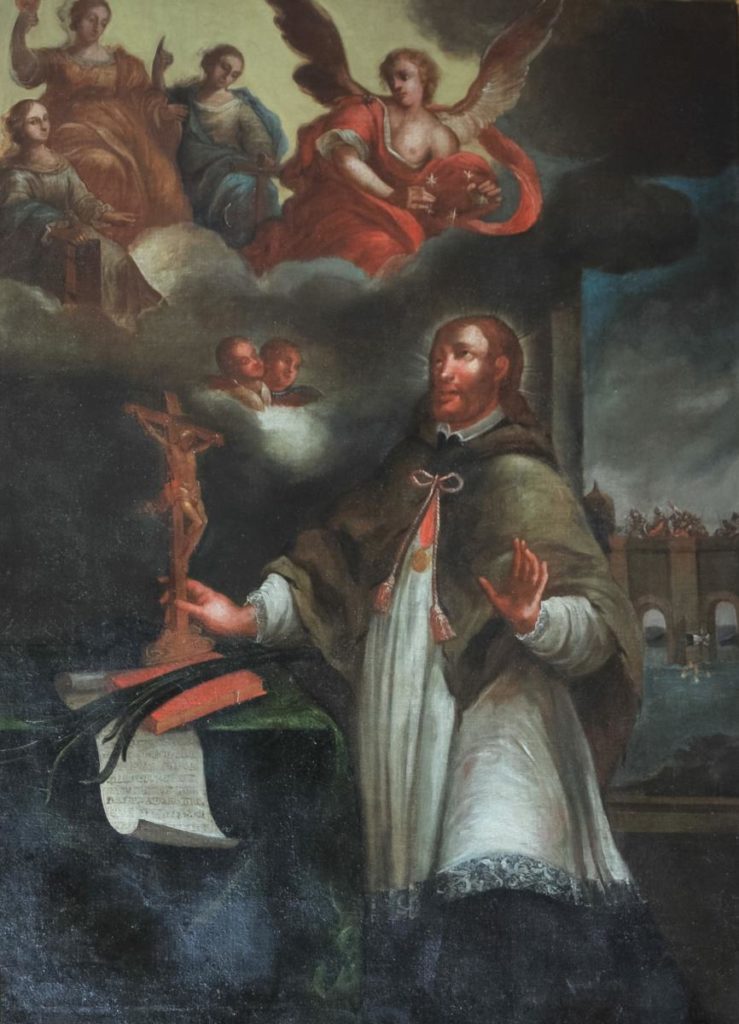
Indulgences
ipsa die (Świętej Trójcy)


